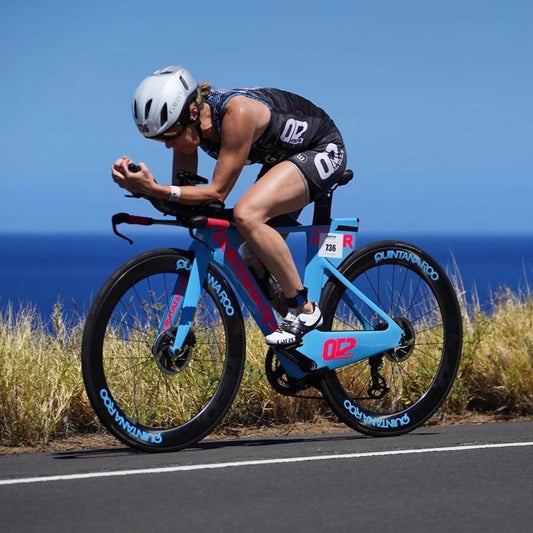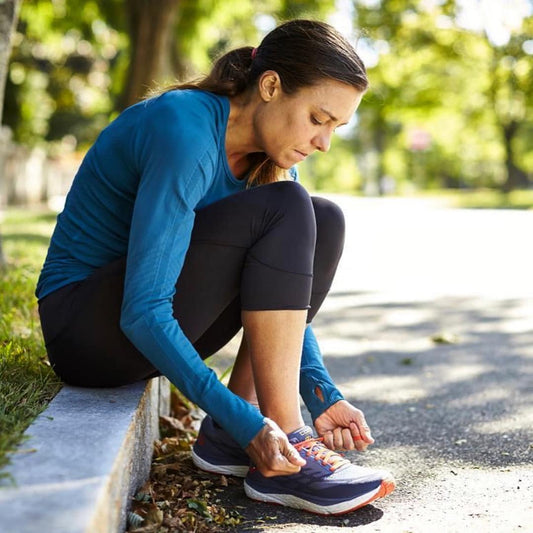In recent years it seems as though athletes have moved more and more of their training indoors. There are a lot of advantages to indoor training, including safety, convenience, being in a controlled environment, and also never having to deal with adverse conditions. In this day and age with smart trainers and Zwift and all sorts of apps, indoor training has become far more entertaining and even social. It’s a lot different from fifteen years ago when I can remember sitting on my basic trainer following the same Spinervals VHS tape for the twentieth time.
Don’t get me wrong, indoor workouts are great. Most athletes can get just as fit without ever actually moving a single mile, except virtually. You can certainly be ready for a big race even stuck indoors and sometimes situations are such that we aren’t given a choice. I spent one winter training for an Ironman in March and hadn’t biked outside for five months by the time I reached the race venue. We had gotten about five feet of snow that winter so there was just no alternative, and my fitness was just fine. It is also completely understandable that a lot of people have moved indoors mostly due to convenience and safety, and we all need to make our own decisions as far as where the level of acceptable risk is.
All that said, it’s important to remember that triathlon is an outdoor sport. Most of us are training for races, and sometimes those races happen on less-than-ideal days weather-wise, and unless the weather is truly dangerous, we aren’t really given much alternative but to figure out how to deal with it. It’s a lot easier to figure out how to deal with it if you have done some of your training in it.
This past June I competed at Ironman Ireland. Anyone who knows anything about Ireland knows that rain can be pretty common there, as can chilly temperatures even in summer. So while it could have been beautiful, there was also a very good chance that it might rain and not be that warm on race day. As it happened, New England, where I live and train, had a particularly cold and rainy spring. Once the snow melted and the roads were ridable, I headed outside. This meant quite a few rainy, chilly rides. Is it always fun? Of course not. But I knew that if I was used to riding in rain and even worse cold than I could possibly face in my race, then I would be able to handle a bad weather day in the race. The more you ride in those conditions, the more you get used to it.
For those of you who don’t know, the weather in Ireland on race day was, in a word, abysmal. The swim was canceled due to rough conditions and rip currents and even by Ireland standards it was incredibly rainy and windy. There is no getting around the fact that those conditions are a lot less fun to race in than a beautiful sunny day, but because I was so used to riding in cold and rain, my body could handle it. In fact it was probably ten degrees warmer in Ireland than it was for a lot of my long rides, so while lots of athletes really suffered in those conditions, I was fairly used to it. I did spend some time shivering on the side of the road dealing with bike mechanical issues, but for the majority of the race, I was fine.
I would of course never advocate for anyone to go out and train in truly unsafe conditions, and it is understandable if there isn’t much alternative to indoors for logistical reasons. But some athletes tend to use the indoor training as a crutch. They don’t want to go out and be slightly cold or uncomfortable, even though it could be more than a little cold and uncomfortable on race day. Racing in 55 degrees and rain is a lot less unpleasant if you have done it before and know what it feels like. Same goes for the really windy days, or really hot days. Another advantage is you learn how many layers you need to keep warm in those sorts of conditions, which can sometimes take some trial and error.
Another important factor to getting outside is to keep up the practice of bike handling. Let’s face it, triathletes are not always the best at bike handling. Bike handling is a skill that requires practice, and if you are totally out of practice, race day can be a bit of an unpleasant surprise if you aren’t particularly used to things like cornering, descending, avoiding potholes and staying out of the way of other athletes.
It’s up to you how often you want to brave the less-than-ideal conditions. At the very least a couple of times would be a good idea. More if the race you are training for is notorious for rain or cold or both. If only to prove to yourself you can handle it. Just make sure you are safe when you do it and are dressed warm enough and in brighter colors if it is raining so drivers can see you. I know you may not want to miss your group Zwift workout or leave the comfort of your nice, dry trainer, but if race day turns out to be cold and miserable and you’ve trained in that a few times and know you can handle it, I promise you will be glad you did it.
This post was written by QT2 Level 2 Coach, Molly Zahr.





